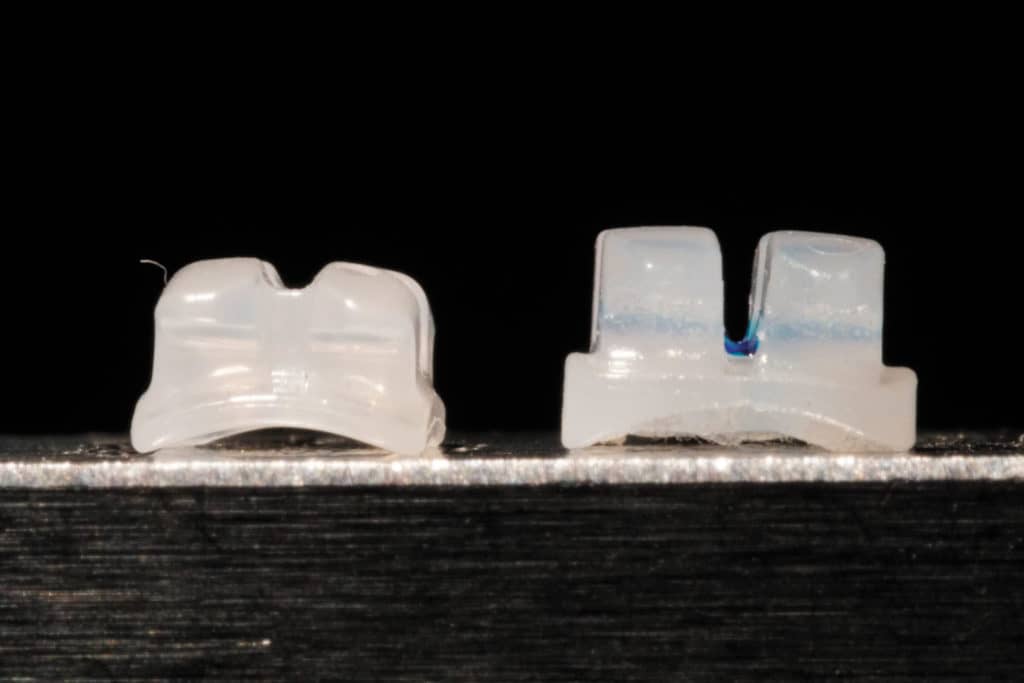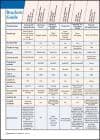An orthodontist with 30 years of experience working with ceramic brackets explains why the latest products offer a clear advantage
By Mark N. Coreil, DDS
My graduation from orthodontic residency coincided with the introduction of ceramic brackets into the marketplace. With an ongoing focus on aesthetic brackets in my practice, I have had the opportunity to treat patients with the vast majority of ceramic brackets developed over the past 30 years. While early entries, namely Starfire and Transcend, created excitement about aesthetics, they fell short when it came to removal.1 The stories I share with young orthodontists about removal in the early years are sometimes hard to believe. But times have changed, and ceramic brackets have evolved with the newest products on the market making easy, predictable removal in one piece possible, while also satisfying the performance and aesthetic needs of the orthodontist.
With my 30 years of experience with ceramic brackets, I’ve found there are five factors to consider when evaluating whether a ceramic bracket product is right for your patients.
#1: Removal
Many orthodontists have avoided using ceramic braces due to the challenges associated with bracket removal. In most cases, removing a ceramic bracket resulted in the fracturing of the bracket. Additionally, the discomfort and noise often associated with the removal of many ceramic brackets created a very poor patient experience. Attempts to “soften the blow” were mostly unsuccessful and this did not bode well for patient referrals. Bracket fracturing can leave ceramic fragments on the tooth requiring the doctor to spend several minutes removing these pieces with a high-speed bur. In our office we estimate that this extra step could be costing the practice as much as $250 of doctor time.
For the last few years, I’ve been using Symetri Clear ceramic brackets from Ormco Corp in my practice. What I appreciate is that, while it is a ceramic bracket, it provides for removal similar to metal brackets. Thanks to the proprietary base design and patented debonding plier, Symetri can be removed in one piece with minimal noise and no discomfort to the patient. When doctors experience this process for the first time, they often claim that the bracket was not properly bonded to the tooth. In reality, the “shear-peel” type removal can be completed using only fingertips on the plier and no torqueing of the tooth. The positive patient experience translates into more satisfied patients who are more willing to refer to the practice.
TIP #1: Engage the tips of the debonding tool under the tie wings to hold the bracket while the lever is depressed with finger pressure initiating a “peeling” of the bracket away from the tooth. No torqueing of the plier is needed (Figure 1).

#2: Profile
In order to prevent enamel wear, many orthodontists have avoided using ceramic brackets on the lower arch. This strategy was often associated with the larger profile and size of ceramic brackets. But the proprietary material and patented design of a product like Symetri translates into a low profile bracket, allowing use on the lower arch in most all cases (Figure 2). The remarkably low profile has generated many positive comments from patients, especially those who had earlier treatment with a different type of ceramic bracket.
TIP #2: When using this bracket, at the initial bonding and during early alignment, use bonded ramps to ensure no contact with the opposing arch. We routinely remove the ramps after the lower arch is leveled.
#3: Comfort
Many ceramic brackets on the market are just not very comfortable. Sharp corners to tie wings and hooks often make patients miserable, especially during the early stages of treatment. Polishing these sharp edges is problematic because ceramics are brittle and require the use of a high-speed diamond bur. As one attempts to polish the sharp corners, the loss of structure often weakens the bracket.
I’ve found that Symetri provides for exceptional comfort due to patient friendly design. The facial aspect of the bracket and all “corners” are rounded resulting in a softer feel to the patient (Figure 2). We have not had a single request to “smooth” a sharp corner since using Symetri. In fact, the most common response is how comfortable the brackets are in both the anterior and posterior.
TIP #3: Historically, the hooks of ceramic braces created a challenge for my adult patients because of the sharp edges. Symetri features a smooth, functional hook; thus, we order the bracket with hooks on all 3s, 4s and 5s. This allows us to use elastics without having to resort to ligature hooks.
#4: Ligation
Many orthodontic assistants often dislike ceramic braces due to the challenges associated with ligating a wire. The lack of under tie wing area made for very slow wire insertion and the tying rotations were almost impossible. Due to the lack of undercut, ligatures slide out from under the tie wing when trying to set a flexible wire. Assistants will celebrate the fact that ligation with Symetri is the same as with metal twin brackets. In fact, in my practice, we’ve found the under tie wing area allows for predictable double tying as well (Figure 3).

#5: Aesthetics
All ceramic brackets offer an improvement over metal when it comes to aesthetics. But not all ceramic brackets match the variety of tooth shades found in the general population. Symetri is made with proprietary ceramic particles that allow for improved shade matching and excellent overall aesthetics (Figure 4). Most other polycrystalline ceramic brackets are somewhat opaque when viewed on the tooth but Symetri allows for optimal light penetration which blends with the adjacent enamel.
The Patient Experience
We treat many adults who are looking for an aesthetic alternative to aligners. The most common discussion centers around, “How long will the treatment last?” and “With my busy schedule I would prefer an option that does not require me to remember to do anything!” These are the same questions we hear from our teen patients. The following cases help illustrate how Symetri satisfies the patient in both categories, and how ceramic brackets have really evolved.
Case 1: An adult patient presented with concerns about the blocked out upper right lateral incisor. At the initial bonding a 0.014 “CuNiTi was placed (Figure 5).
5A 5C 5B 5D
Case 2: A teen patient at initial bonding and 5 months later (Figure 6). Note the changes in the archform as well and improvement in the open bite.
6A 6B 6C 6D 6E 6F 6G 6H
Case 3: An adult who started in aligners but decided she was “too busy” to wear them requested an alternative treatment to address her crowding. She went on to say that we needed to be finished in 4 months due to upcoming travel. I offered Symetri to her and bonded her the same day (Figure 7).
7A 7B 7C 7D 7E 7F
With a ceramic bracket, you want the same control that you have with metal brackets. With Symetri we get the rotation control we’ve wanted, as well as the ability to double tie with steel ligatures/chain. In my practice, we are able to use the exact same wire sequence with both metal brackets and Symetri making this system easy to incorporate into any practice. The one-piece removal makes debonding just as simple as metal. The patient experience at a Symetri debond appointment is pleasant making patient referrals a reality.
Over the last 30 years, I’ve watched ceramic brackets evolve. The latest products go a long way to eliminating the challenges of earlier products. Now, I can say that there are product options that combine both performance and aesthetics. OP
Mark N. Coreil, DDS, is a board-certified orthodontist practicing in Houma, La. He has worked with children who have craniofacial problems over the past 15 years. He is assistant professor of clinical orthodontics at the Louisiana State University School of Dentistry and is actively involved as an orthodontist on the Children’s Hospital Cleft and Craniofacial Team. Coreil graduated from Louisiana State University School of Dentistry in 1986 and completed his orthodontic specialty training at LSU in 1988. He completed the Roth/Williams Advanced Clinical Program in 1993. Coreil has lectured both nationally and internationally for the past 20 years. Coreil is a paid consultant for Ormco Corp.
Reference
Jeiroud, M. T: Enamel fracture caused by ceramic brackets, Am. J. Orthod. 99:97-99, 1991.

































